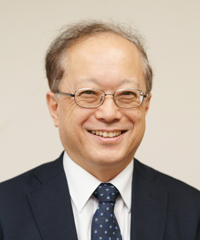Last year, I attended two consecutive conferences on preschool education in Mexico and China. The two conferences were scheduled closely together, and the exhausting trip from Mexico to Shanghai was 20 hours requiring three stopovers, but was worth the while as I encountered a number of very interesting findings. I will introduce them here over a number of blog entries.
At the conference in Mexico, Professor Pekka Räsänen, a specialist on mathematics education in Finland gave a lecture that left a lasting impression, and I was able to discuss it with him after the lecture. The lecture concerned the mathematics curriculum in Finland and the reasons for the slower pace in covering material when compared with other countries, in particular, the nations of Latin America. For example, in Finland, children learn how to write numbers for the first time in elementary school. First-graders do not learn addition and subtraction.
Dr. Räsänen's explanation was extremely clear. The math curriculum used in many schools in Latin America progresses at a fast pace, only a few students actually understand the content when they reach the higher grades of elementary school. Although there are attempts to modify teaching methods to promote better understanding, the curriculum continues to follow a fast schedule. He explained because it is quite common for students to have difficulty understanding numbers in the lower grades of elementary school, the education system in Finland allocates sufficient time for teaching these skills.
Dr. Räsänen has developed educational game software for tablet use that supports an understanding of numeracy, and in his lecture, he gave a demonstration of its use as well as methods that promote it. Actually, Dr. Räsänen stated that in one country in Latin America where the survey was conducted, they ascribed the cause of the fact that the majority of students were unable to comprehend fundamental concepts or perform the four basic arithmetic operations not to the fast pace of the curriculum, but rather to the teachers' lack of teaching skills. Moreover, he noted that in Finland the curriculum proceeds more slowly, in line with how children learn numbers and arithmetic in reality.
As a matter of fact, Dr. Räsänen's game-like software that supports learning numbers and arithmetic is based on a view of neuroscience in which the understanding of numbers and calculation is dependent on the working memory of visual images. The software, which shows numbers as round pellets, resembles an abacus. When I pointed that out to him, he answered that he was aware of the resemblance and that it might be the reason why children in South Korea and Japan have advanced mathematical ability. I don't think the abacus is used as much in arithmetic classes in Japan, but his comment made me happy.



 Yoichi Sakakihara
Yoichi Sakakihara










